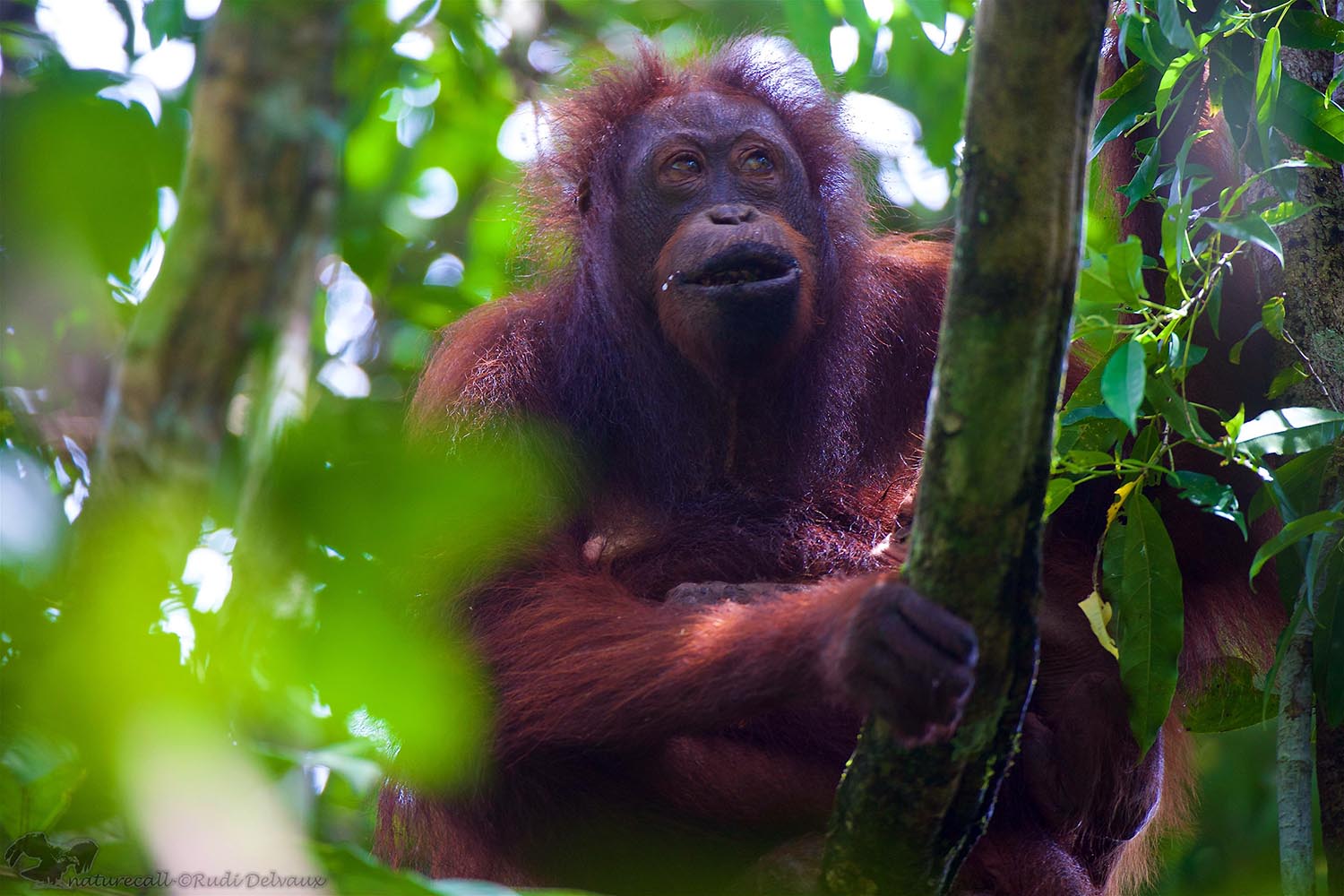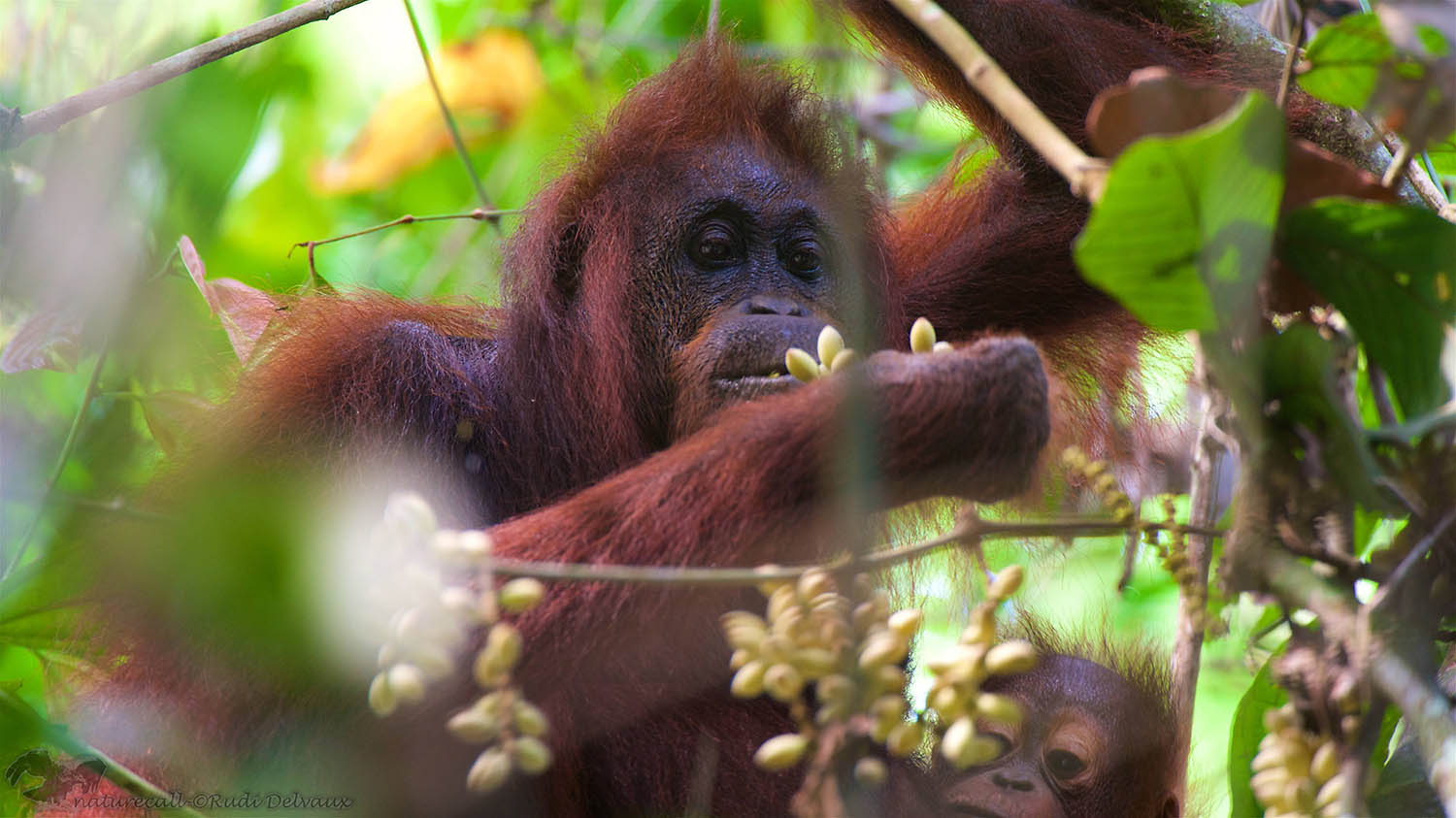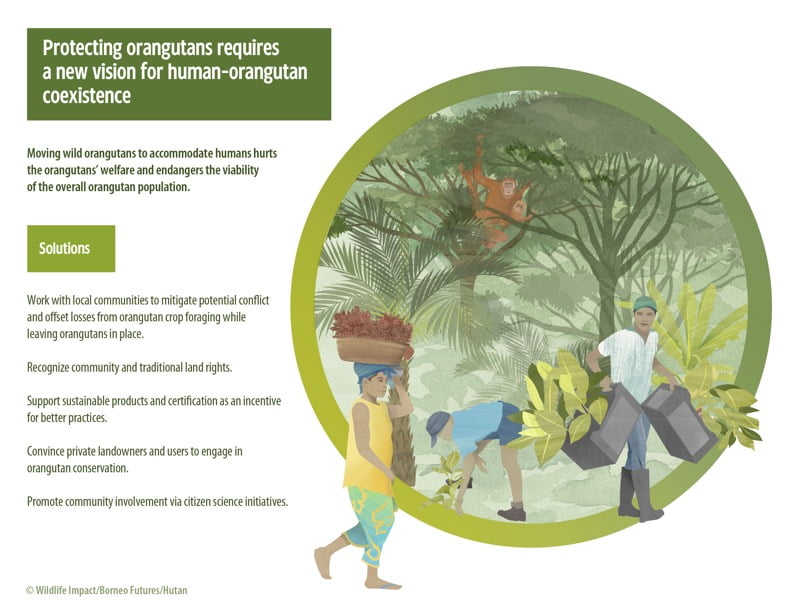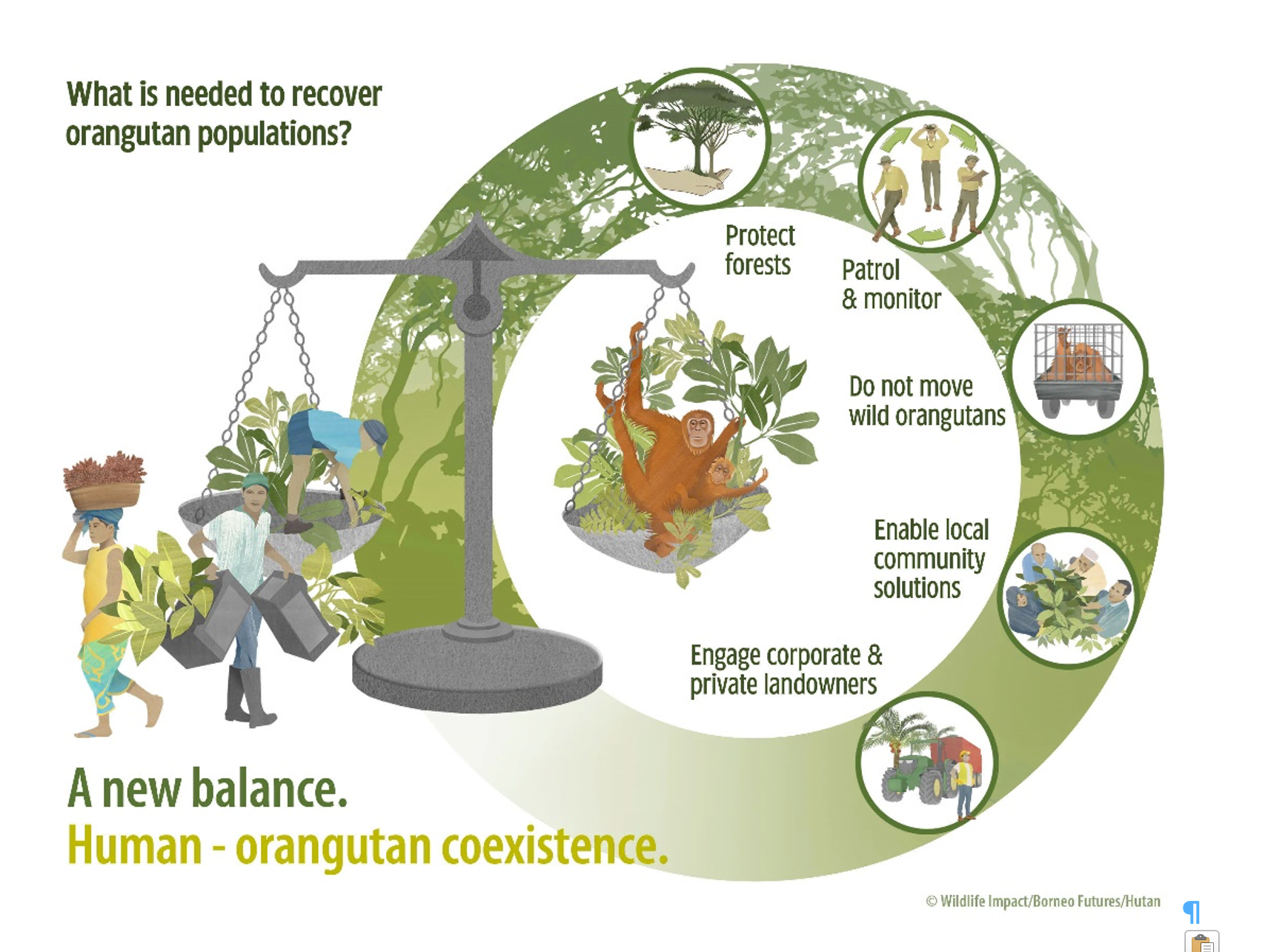Half-Earth doubles gains for orangutans
A joint press release from HUTAN and Danau Girang Field Centre
16 October 2022, Kota Kinabalu: A new study in Oryx—The International Journal of Conservation assesses what would happen to Bornean orangutans in the next decade under different management assumptions.
The study looks at three scenarios: Business As Usual (BAU), which is the continuation of on-going management practices; the Half-Earth vision, a concept launched by E.O. Wilson in which half of the land and sea would be protected to manage sufficient habitat to reverse the species extinction crisis and ensure the long-term health of our planet; the Whole-Earth approach, also known as “Sharing the Planet” vision, which advocates the global integration of conservation agenda with other societal goals.
The group of 20 experts from Malaysia, Indonesia and overseas participating in the study concluded that under current management practices orangutan populations may decline by around 27% between now and 2032 in Borneo. This would represent several hundreds of orangutans for Sabah alone.
Professor Benoit Goossens, Director of Danau Girang Field Centre and affiliated with the Sabah Wildlife Department, commented that “business-as-usual in orangutan conservation is clearly insufficient to support the protection of the species. Luckily there appear to be better strategies, with especially a Half-Earth approach to conservation predicted to strongly reduce orangutan declines in the next decade”.
Half-Earth, with a goal of protecting at least half of Borneo, would be comparatively easy to achieve and would reduce the decline in the orangutan population by 2032 by at least half compared to current management. “Indeed, 65% of Sabah’s landmass is forested, and Sabah is committed to ensuring that at least 50% of its landmass is designated and protected for sustainable forest exploitation, environmental protection, biodiversity conservation, and socio-economic well-being,” added Goossens.
The Whole-Earth approach, a fundamentally different approach to conservation focused on equitable land management, finance, and governance, was, however, foreseen to lead to greater forest loss and ape killing and a 56% population decline within the next 10 years across Borneo. Whole-Earth approaches are valuable but may not be workable for the short-term orangutan conservation needs, because of political and economic realities on the ground.
Dr Marc Ancrenaz, HUTAN Scientific Director and also affiliated with the Sabah Wildlife Department, said “the good news is that this analysis predicts that, if orangutan killing and habitat loss were stopped, orangutan populations could rebound and reach 148% of their current size by 2122. The recent surveys by the Sabah Wildlife Department and their partners show that the size of most orangutan populations is stabilizing in the State. Despite large population declines over the past 20 years, we start to see glimmers of hope for orangutans. Indonesian and Malaysian deforestation rates are down, as are expansion rates of oil palm and other crops.”
However effective conservation investment and management are needed to ensure that orangutan habitats would remain permanently forested, and that the other key threat – unsustainable killing – is effectively addressed. To prevent killing, more effective engagement with rural communities on Borneo is urgently needed, and this is where elements of the Whole-Earth approach are helpful – particularly in prompting a long-term overhaul of orangutan conservation’s scientific, ethical and funding models.
The authors encourage both the Indonesian and Malaysian government to build on their commitments to setting aside at least half the land area of their countries for conservation, while enforcing the policies that ensure forests are conserved and orangutan killing is halted and the degradation of its habitat is halted and reversed. They also call on the Global North to match these commitments from the tropics by restoring natural areas. At the same time, they highlight the importance of adopting more holistic, equitable Whole-Earth style approaches when designing long-term strategies for orangutan conservation.
It is not an easy path ahead, but solutions exist that can ensure the long-term survival and even population recovery of the Asian red ape.
The article Restoring the red ape in a whole- or half-earth context is available in Oryx—The International Journal of Conservation. Publication of this article was sponsored by the SSC–Oryx Partnership Fund.

©Danau Girang Field Centre

©Danau Girang Field Centre


For more information on this press release, please contact:
Dr Benoit Goossens
Danau Girang Field Centre
